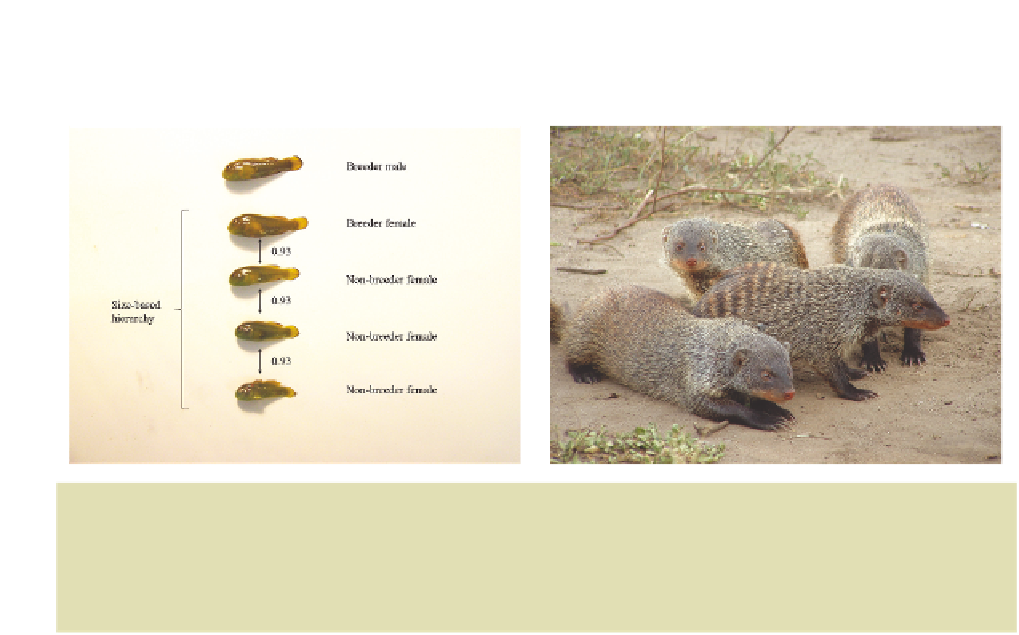Biology Reference
In-Depth Information
(a)
(b)
Fig. 6.20
Reproductive skew. (a) Size hierarchy in a group of the coral-dwelling goby,
Paragobiodon
xanthosomus
. These individuals were anaesthetised to enable this photo to show the size ratios within the
group. Subordinates restrain their growth to avoid being evicted by the dominants. Photo © Marian Wong.
(b) A banded mongoose group. Dominant females evict pregnant subordinates when the group size exceeds
the optimum from the dominant's point of view. Photo © Hazel Nichols.
Queuing by size in groups of coral reef fish
Coral reef fish often live in groups, with larger individuals dominant over smaller
individuals. In many species, this dominance hierarchy forms a social queue; only the
largest individuals in the group breed and when they die, or are removed experimentally,
the next largest individuals take over as breeders. It might be thought that subordinates
grow more slowly simply because they are out-competed by the dominants for food.
However, in both clownfish,
Amphiprion percula
(Buston, 2003), and the coral-dwelling
goby,
Paragobiodon xanthosomus
(Wong
et al
., 2007), the size difference between
individuals adjacent in rank is more regularly stepped than would be expected by
chance. In the gobies, subordinates tend to be 90-95% of the length of the next-sized
fish in the hierarchy, and as they reach this size threshold their growth rate usually
declines (Fig. 6.20a). In laboratory experiments with artificially constructed groups
kept in aquaria, it was found that subordinates were never evicted from the group by
their immediate dominant when their size ratio was less than 0.95, but above this ratio
the dominant was increasingly likely to evict them.
These observations suggest that subordinates often restrict their growth so they can
continue to remain in the group and await a breeding vacancy without risk of eviction.
Wong
et al
. (2008) tested this by offering subordinate gobies supplemental food. Some
refused the food, despite no feeding interference from dominants. They remained small
and were tolerated in the group. Others continued to eat, grew beyond the 95% threshold
ratio and were evicted by the dominant. Therefore, subordinates have to choose between
restraint, with the benefits of group living while they wait to become a breeder, or rapid
growth, which may hasten their breeding chances but at the risk they will be evicted
from the group.
Subordinates may
restrain their
growth to avoid
eviction by
dominants





























